Wow. Things are moving fast.
I’m not sure when the next Hot Stove will come out because…
I’m Going to the Mattresses: Like the Corleone family in The Godfather, I’m going to a hideout so the other gangster families can’t find me. Or a virus.
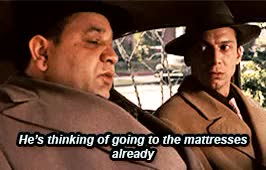
The hideout is of course our condo. Like much of the world, the Polsinelli firm is scaling back in-house work. With my office four blocks from our condo, I have never had to adapt to working remotely. This old guy may not be very good at that. Emails are no issue, but formatting, cutting/pasting, etc. for a Hot Stove – not so sure. There is also the question of focus in these times. So if you don’t see a Hot Stove for a while, please transmit good vibrations toward Rita – she will be stuck with Lonnie underfoot during the day.
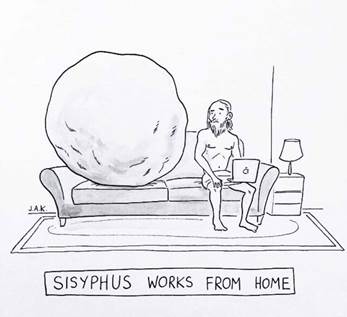
Spring Training: It was so normal for a while. Hot Stove stringers were headed to spring training. Marsha Campbell again rented a place in Phoenix to begin welcoming a parade of guests for the games. One of the first was David Matson who reported back “I have seen two games and only takeaways are Phillips can’t hit, Kowar got bombed in first outing, and Heath can’t field.” David was channeling the late Jack Campbell, revered for his blunt observations on the Royals.
Last week, on Monday, Jim and Judy Heeter joined Marsha for a Royals game at Salt River Fields at Talking Stick, the spring home of the Arizona Diamondbacks. Also at that game were my fellow retired partners Larry Ward and Harlan Stamper and their pal Jerry Haake who were in Arizona for their annual golfing trip. The game ended in a 4-4 tie.
On Tuesday, the Royals played two split-squad games. Beat the A’s, lost to the Brewers.
On Wednesday, the Royals were rained out. That night, the NBA suspended its season. The first domino.
On Thursday, March 12, while MLB officials worked on what to do, the teams training in Florida played their games with fans in the stands. Before the Cardinals game, St. Louis infielder Matt Carpenter assessed the situation, “It felt like the most meaningless baseball game in the history of the sport.” Players had already been taking some actions to avoid close contact. Some were foot-tapping instead of high-fiving. Emilio Boniface and Starlin Castro (below) of the world champion Washington Nationals used an elbow-bump to celebrate a good play.

But by the time the sun moved two more time zones, MLB suspended spring training. The Royals and other teams training in Arizona did not play that day. And we have no idea when they will play next.
Playing Games With No Fans: With the NBA and MLB suspending play, more dominoes fell. The NCAA first tried to compromise by saying March Madness would continue with no fans in the stands (but with TV money intact). That was the status when this cartoon ran:

But that did not hold up. First Duke and then Kansas said they would not be participating. Just as importantly, the chief medical officer of the NCAA said that the United States testing infrastructure couldn’t support widespread testing of competitors. The NCAA basketball tournament was canceled for the first time since it started in 1939.
“The Silence of the Fans”: This is the title of an article I read a few years ago and went back to find it on the internet. It was by the legendary New Yorker writer Roger Angell who had just witnessed the only game in MLB history played without fans.
The game was on April 29, 2015. There was ongoing civil unrest in Baltimore after the death of Freddie Gray who had been critically injured while in police custody. The Orioles were scheduled to play the White Sox that night, and there was no likely makeup date later in the season. The police were busy on the streets, so adequate security for a baseball crowd was not available. The game was moved up to the afternoon and played with no fans. Reporters, broadcasters and team staff were the only non-players in Camden Yards. The Sox won 8-2.
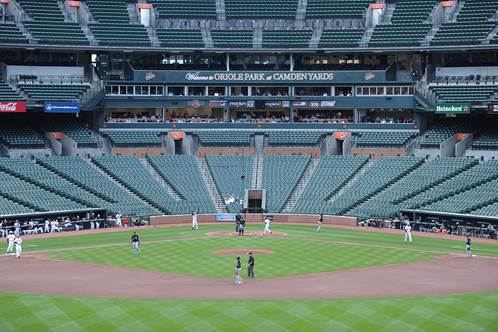
Roger Angell was then 94 years old (now 99), and he found the game to be an unexpected reminder of the relentless add-ons and distractions of modern-day ball. “The Kiss Camera, the racing mascots, the T-shirt cannonades…” and so much more. “Fans love this and eat it up, but today’s silent anomaly in Baltimore is a mirror reminder that what’s been taken away from the pastime isn’t the crowd but the game: what we came for and what we see in passing fractions, often seen in a held-up smartphone.”
Times may have changed, but Roger Angell’s nostalgia is pure poetry.
“Some among us (I am one of them) can recall a time when the baseball and the players were the lone attractions, barring a few outfield signboards. Nothing more, not even an organist. You watched and waited in semi-silence, ate a hot dog, drank a Moxie, watched some more, yelled when something happened, kept score, saw the shadows lengthen, then trooped home elated or disconsolate. It was a public event, modestly presented, and private in recollection. If the game was a big one, with enormous Sunday crowds and endless roaring, it was thrilling to have been there, but in some fashion you’d also been there alone, nobody else in sight.”
Baseball in the Time of Spanish Influenza: I ran across this Babe Ruth newspaper article on Twitter. Although it refers to him as a “batting ace” (he led the league in homers), he was also still a pitching star for the Red Sox (winning two games in the 1918 World Series). So I got to wondering how baseball was affected by the Spanish flu epidemic that year.
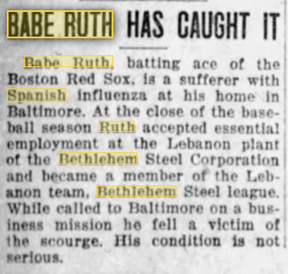
The world was at war in 1918. The Spanish flu pandemic was spreading its way around the globe. Major league baseball was played from Opening Day through the World Series.
When the U.S. entered the war in April of 1917, baseball owners offered to not play the season. President Woodrow Wilson did not want that. In fact, gatherings of crowds for games, war rallies and the like were encouraged to maintain morale in the country. Wilson knew that his re-election in 1916 was based partly on his promise to not enter the war. Such gatherings could help turn popular opinion, especially if sprinkled with patriotic talk and songs to gain support for the war (and Wilson).
This approach continued in 1918, but was accompanied by a danger not initially understood. Ironically, the gatherings to build morale often became incubators for the flu epidemic. How this played out in Kansas City is the subject of an excellent article by Eric Adler in the Kansas City Star (click here).
Baseball was not shut down. But as the war dragged on, more men were needed. So as of July 1, 1918, all able-bodied men between 21 and 30 had to either work (in an essential industry) or fight (join up or get drafted). Baseball owners asked for an extension so the players could finish the season. In a compromise, the season was shortened to end on September 1, and the players on the pennant winners were allowed to also play in the World Series.
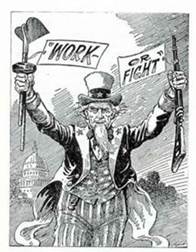
The Boston Red Sox and the Chicago Cubs met in the Series. In game 1, during the 7th inning stretch, a band played “The Star Spangled Banner.” In a moment that must have pleased President Woodrow Wilson, the crowd joined in singing the anthem. A new baseball tradition was born. As for Ruth having the flu, one report says “Boston’s Babe Ruth, then a robust 23-year-old, was stricken twice but fought it off sufficiently to pitch and win a pair of games for the victorious Red Sox.” The Sox won, 4 games to 2. For more details on the 1918 season and World Series, see Hot Stove #83.
Baseball was lucky to complete its 1918 season. The first wave of the pandemic had come in the spring of 1918, but it was generally mild. Soon after the World Series, a second, highly contagious wave appeared with a vengeance. Many sports began cancelling games and seasons. Some games were played without fans. The National Hockey League played its season, and in March of 1919, the Stanley Cup series pitted the Montreal Canadians against the Seattle Metropolitans. With the Series tied 2-2-1, the Canadians had so many players sick with the flu that they intended to forfeit. Seattle declined to win that way, and so the engraving for 1919 on the Stanley Cup reads “Series Not Completed.”
The pandemic came to an end in the summer of 1919. Ruth and the other young players who had expected to in the armed forces never had to go – the armistice was reached on November 11, 1918. So the 1919 season was played in full, ignominiously ending with the White (Black) Sox throwing the World Series.
The flu epidemic gets somewhat lost within the war coverage. But it was actually much more deadly. Worldwide war deaths of soldiers and civilians were estimated at 21 million, while flu deaths were estimated at 50 million. In the U.S., flu killed about 675,000 – the war, 117,000.
I just bought a book to read in my hideout:
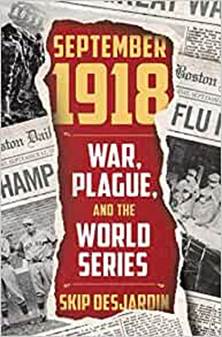
Brockmire: There is some baseball this week. The fourth (and final) season of IFC’s Brockmire starts Wednesday night. Hank Azaria plays Jim Brockmire, a former Kansas City Royals announcer who is relegated to announcing in the minor leagues. He lost the Royals job after an on-air meltdown during which he described in obscene detail the actions of his cheating wife. The show is profane and sometimes over-the-top. But hey, it is baseball. It helps that team owner Jules James is played by the delicious Amanda Peet. Click here for some of Brockmire’s home run calls.
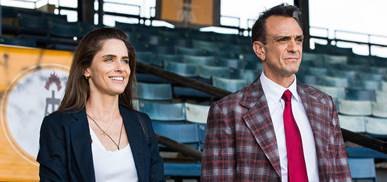
In Season 3, George Brett made a guest appearance, playing the role of Brockmire’s best friend from his Kansas City broadcasting days. The non-actor Brett was able to get through his part after being allowed to ad-lib his lines. In an interview with the New York Post, Brett said “It’s amazing how time consuming it is for 45 seconds on camera. It takes you two and a half hours…I enjoy doing it. Hopefully someone will see this on Brockmire [and I’ll get more opportunities].”

This year’s episodes take place in the baseball season of 2030. The owners are desperate for changes to increase fan interest, including shorter games. They decide a maverick like Brockmire might make a good commissioner. Even Brockmire thinks that’s a crazy idea. Can’t wait to see how it turns out. Click here for the season trailer.
On the Web: The Athletic, my favorite sports app, has dropped its paywall for virus coverage. Check it out here. Same for news source The Atlantic (click here).
Without current baseball action, I again encourage readers to subscribe to The Athletic. Joe Posnanski has been counting down the Top 100 players of all-time – each with an excellent essay. He was to complete the countdown as of Opening Day, but that date is now unknown. So he is doing the countdown only on Mondays, Wednesdays and Fridays until concluded. On the other days, he is starting a new series on “Favorite Players.”
Royals Review is still a prolific source of Royals news, even with no games in play. Click here.
If you get bored, you can catch the Hot Stove archives, travelogues, etc. at the Lonnie’s Jukebox website. Click here.
Also, there is a sport that continues to be played without virus risk (click here).
Ken Burns has acted to fill in some baseball time – all episodes of his PBS baseball series are now running free online (click here).
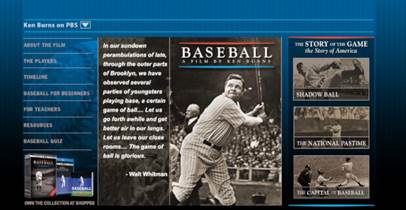
A tweet from Tom Hanks, recovering from Covid-19 in Australia: “Remember, despite all the current events, there is no crying in baseball.” A much younger Tom Hanks had a “go to the mattresses” scene in You’ve Got Mail (click here).
A tweet from Tom Boswell, Washington Post sportswriter: “Suddenly the Bob Uecker seats don’t look so bad.” Boswell is referring to the old ads for Miller Lite where Uecker ends up sitting alone in the upper deck. A baseball equivalent of “social distancing.” Click here for the ad.

Uecker is a former player and a long-time broadcaster for the Brewers. When Rita and I were in Milwaukee on our 2019 stadium tour, I sat next to faux Bob in his “Uecker Seat” in the last row of the upper deck.
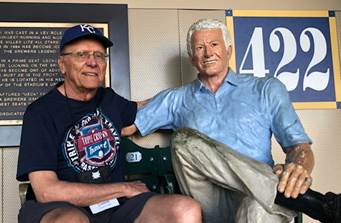
Lonnie’s Jukebox – Clean Hands: As noted above, the “no touching” rules have led to shoe-taps, elbow-bumps and other moves. I am reminded of a 1959 record by the Coasters that starts off with these lyrics:
She comes on like a rose but everybody knows
She’ll get you in Dutch
You can look but you better not touch
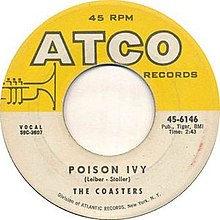
A little more about that woman and her effect:
Poison ivy, poison ivy
Late at night while you’re sleepin’
Poison ivy comes a-creepin’ around
She’s pretty as a daisy but look out man she’s crazy
She’ll really do you in
If you let her get under your skin
Measles make you bumpy
And mumps’ll make you lumpy
And chicken pox’ll make you jump and twitch
A common cold’ll fool ya
And whooping cough’ll cool ya
But poison ivy, Lord’ll make you itch!
You’re gonna need an ocean of calamine lotion
You’ll be scratchin’ like a hound
The minute you start to mess around
Poison ivy, poison ivy…
“Poison Ivy” was written for the Coasters by the famed songwriting team Mike Leiber and Jerry Stoller. In case you missed the point, Mike Leiber has confirmed his intent: “Pure and simple. ‘Poison Ivy’ is a metaphor for a sexually transmitted disease.”
Leiber and Stoller wrote several “storytelling” hits for the Coasters, including “Young Blood,” “Searchin’,” “Charlie Brown,” “Along Came Jones” and “Idol With the Golden Head.” My favorite cover of “Idol” was performed live by Hollis Hanover at a party celebrating the completion of the bar exam in 1967. Those who were there still talk about it.
I’ll play two of the Coasters hits, but if you get quarantined, you may want to check out YouTube for more. Click here for “Poison Ivy” and here for “Searchin’.”
[Poison Ivy Trivia: Uma Thurman (below) plays the villain/seductress Poison Ivy in the 1997 movie Batman & Robin. Her namesake song is used during a charity event at Bruce Wayne’s mansion. Click here.]
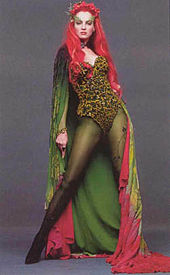
[Uma Thurman Trivia: Uma danced with John Travolta to a Chuck Berry song in Pulp Fiction (1994). Click here.]
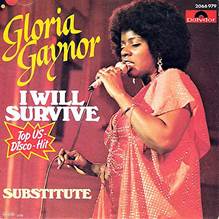
The other record for this installment of the Jukebox is the breakup anthem “I Will Survive” by Gloria Gaynor. It was a number one hit in March of 1979, and it won her a Grammy. She won her second Grammy this year for Testimony (Best Roots Gospel Album).
“I Will Survive” might also make you think of (surviving) coronavirus – and that’s why it’s here. The 76-year-old Gaynor has repurposed her disco song as a 20-second video – the length of time you should wash your hands. And that’s what she does as she sings her song at the sink (click here).

After you’ve washed your hands, come back and listen to the original record (click here).